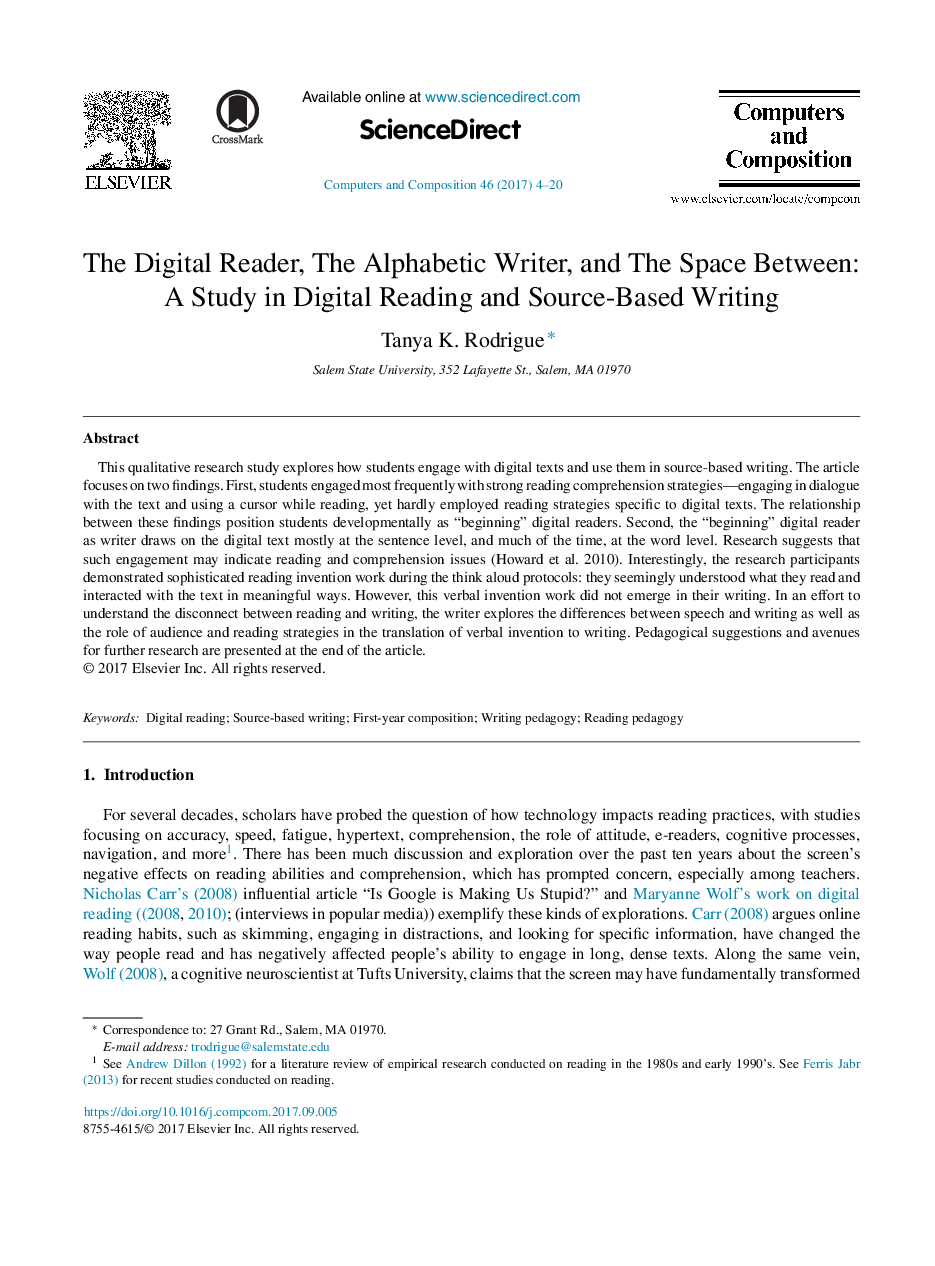| Article ID | Journal | Published Year | Pages | File Type |
|---|---|---|---|---|
| 4936666 | Computers and Composition | 2017 | 17 Pages |
Abstract
This qualitative research study explores how students engage with digital texts and use them in source-based writing. The article focuses on two findings. First, students engaged most frequently with strong reading comprehension strategies-engaging in dialogue with the text and using a cursor while reading, yet hardly employed reading strategies specific to digital texts. The relationship between these findings position students developmentally as “beginning” digital readers. Second, the “beginning” digital reader as writer draws on the digital text mostly at the sentence level, and much of the time, at the word level. Research suggests that such engagement may indicate reading and comprehension issues (Howard et al. 2010). Interestingly, the research participants demonstrated sophisticated reading invention work during the think aloud protocols: they seemingly understood what they read and interacted with the text in meaningful ways. However, this verbal invention work did not emerge in their writing. In an effort to understand the disconnect between reading and writing, the writer explores the differences between speech and writing as well as the role of audience and reading strategies in the translation of verbal invention to writing. Pedagogical suggestions and avenues for further research are presented at the end of the article.
Related Topics
Social Sciences and Humanities
Arts and Humanities
Language and Linguistics
Authors
Tanya K. Rodrigue,
